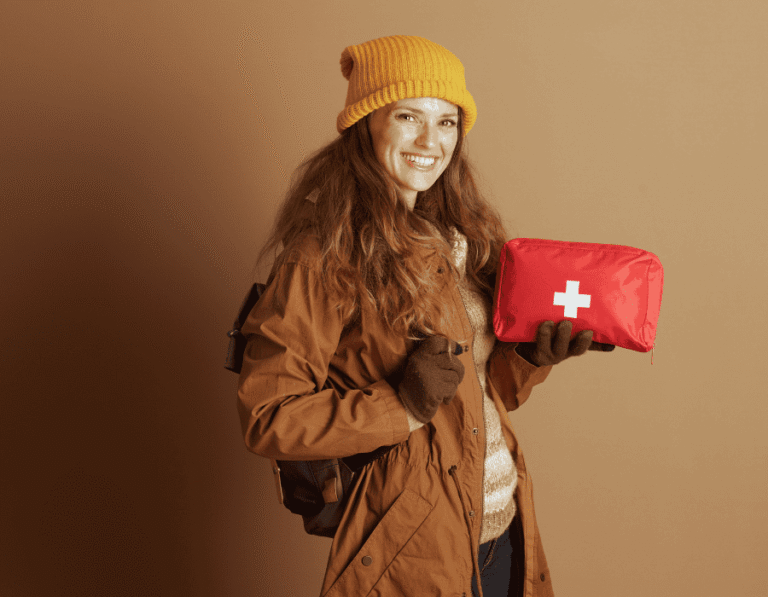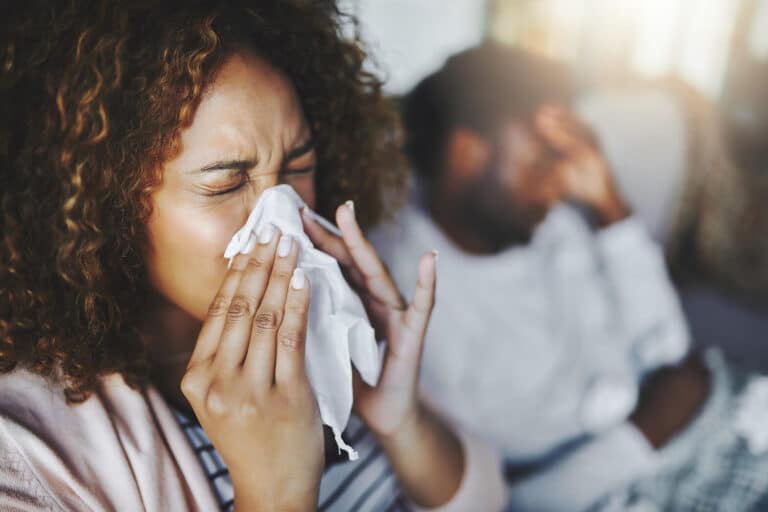Herpes, otherwise known as the herpes simplex virus, is categorized into two types: herpes simplex virus type 1 (HSV-1) and herpes simplex virus type 2 (HSV-2).
The first is mainly transmitted through oral-to-oral contact causing oral herpes (which includes symptoms known as “cold sores”) but can also cause genital herpes. While HSV-2 is a sexually transmitted infection that causes genital herpes. Both types of the infection are lifelong.
A person infected with herpes, whether oral or genital, might show no symptoms or could progress through the different herpes outbreak stages – from blister development to herps healing. However, most herpes infections are asymptomatic.
According to the World Health Organization (WHO), an estimated 3.7 billion people under 50 years old (67%) have HSV-1 infection globally, and an estimated 491 million people between the ages of 15-49 (13%) have HSV-2 infection worldwide.
Astonishingly, the virus causing genital herpes or HSV-2 increases the risk of contracting and transmitting HIV, putting millions at greater risk of contracting an HIV infection.
Let’s take a closer look at the herpes outbreak stages.
What are The Herpes Outbreak Stages?
As mentioned previously, a flare-up of herpes – oral or genital – is often asymptomatic or brings about a progression of stages.
The typical herpes progression stages are:
- The Prodrome Stage
- The Blisters Stage
- The Ulcers Stage
- The Healing Stage
Let’s examine the various herpes outbreak stages and find out what happens during each of them.
1. The Prodrome Stage
The first stage of a herpes outbreak is the prodrome. This is the phase where herpes symptoms start showing, indicating the onset of an infection. During this initial stage of herpes, the virus progresses to the surface of the skin, which often causes redness, itchiness, tingling, pain, or burning in and around the affected area. In the case of genital herpes, an outbreak occurring inside the urethra or labia can cause painful urination.
During the prodrome stage, a person will experience an interval of symptoms indicating the onset of an outbreak, which typically lasts several hours. Some people may experience flu-like symptoms, such as fevers, headaches, or even swollen glands. Pain might also emerge in the legs, buttocks, or hips region during the initial onset of herpes. If it’s the patient’s first herpes outbreak, these symptoms are typically worse.
Although no sores or blisters have developed during this stage of herpes, the skin is still highly contagious and remains so for the entirety of the outbreak.
2. The Blister Stage
So, what does a herpes sore look like?
The blisters stage is recognized by the formation of small red bumps, which then fill up with clear to whiteish-yellow fluid. These bumps and blisters can be painful and extremely sensitive. The skin around the fluid-filled blisters appears red and irritated, and blisters usually develop in clusters.
Often the appearance of herpes blisters is like razor burn, ingrown hairs, jock itch, or even pimples. Due to these resemblances, herpes is commonly written off as one of these other conditions. A person may continue to experience fever-like symptoms during this phase of the herpes stages, but only if an outbreak is associated with the initial infection.
3. The Ulcer Stage
In time, the blisters will burst and drain. Once this happens, open sores called ulcers will develop where the blister was. At first, ulcers appear like pinkish or reddish wounds, which ooze fluid or even bleed. During the ulcer stage of the outbreak, these open sores are more uncomfortable and painful than the preceding blister stage.
Eventually, the ulcers will build up some whiteish-yellow colored fluid, which hardens and forms a scab over the sore. Crusts and scabs develop when the area dries out and doesn’t occur in wet areas, like inside the mouth or genitals, which is why the herpes healing stage takes so long.
4. The Healing Stage
One of the most asked questions about herpes is “how long does herpes outbreak last”. The healing time depends on various factors, and may differ from outbreak to outbreak. Ulcers and sores from a herpes outbreak can take a long time to enter the healing stage. If a person is experiencing their first-ever herpes outbreak, healing can take anywhere from 2 to 4 weeks. While healing is usually quicker during subsequent outbreaks.
While crusts and scabs form over the ulcer, they start healing from the outside in. It’s not uncommon to experience itchiness during the healing stage. Sometimes the scab or crust cracks, causing potential bleeding. Once the scab has fallen off, the area may remain red or pink for a while, and scarring may occur if the scabs are picked at.
Related Read: What You Should Know about Getting Test Results from Your Doctor
At What Stage Is Herpes Contagious?
It’s important to note that herpes is contagious in every stage but is most contagious during the ulcer stage when the blisters have burst open, and fluid is present. Since herpes is spread through skin-to-skin contact with infected areas, it is crucial to take preventative measures to stop the spread, including using condoms and dental dams. However, it’s always advisable to refrain from sexual activity, touching, and kissing when experiencing a herpes outbreak. Wait until you have fully healed before having sexual intercourse, and refrain from touching your sores, since this is an easy way to spread the virus.
An effective way to prevent a herpes outbreak and the spread of herpes is by taking prescription medication from a doctor. Some common medications prescribed for herpes treatment include:
- Acyclovir (Zovirax)
- Famciclovir (Famvir)
- Valacyclovir (Valtrex)
These are all taken in pill form, while severe cases may need to be treated with an acyclovir IV.
Whether oral or genital, you can start treatment during any of the various herpes outbreak stages from onset to healing to prevent another flare-up.
Identifying Herpes: How do Herpes look?
Herpes infections typically appear as clusters of small, fluid-filled blisters or sores on the affected area. The blisters are often described as being round or oval-shaped and may vary in size. They can be red or pink in color and are filled with clear or yellowish fluid. The blisters may be accompanied by symptoms such as itching, tingling, or a burning sensation.
As the blisters progress, they may burst or break open, leading to the formation of ulcers or open sores. These ulcers can be painful and may become covered with a crust or scab as they start to heal. Over time, the crusts or scabs will gradually fall off, and the skin will heal completely.
It’s important to remember that the appearance of herpes can differ from person to person, and the location of the infection can also affect how it looks.
Most Common Places for Herpes
The most common locations for herpes infections depend on the type of herpes virus. Here are the typical locations for each type:
Oral Herpes (HSV-1):
Lips: Cold sores caused by oral herpes are often found on or around the lips.
Mouth: Blisters and sores can also develop on the gums, tongue, inside the cheeks, and the roof of the mouth.
Genital Herpes (HSV-2):
Genitals: Genital herpes primarily affects the genital area. In males, it can involve the penis, scrotum, and surrounding areas. In females, it can affect the vulva, vagina, and cervix.
Anus: Herpes can also occur around the anus, especially in cases of anal intercourse.
Buttocks and Thighs: Sometimes, herpes lesions can extend to the buttocks or thighs, particularly if there is close contact during sexual activity.
Are you experiencing any signs or symptoms of a herpes outbreak? Book an appointment through the Air Dr app with one of our qualified physicians to get the medical care you need today.












